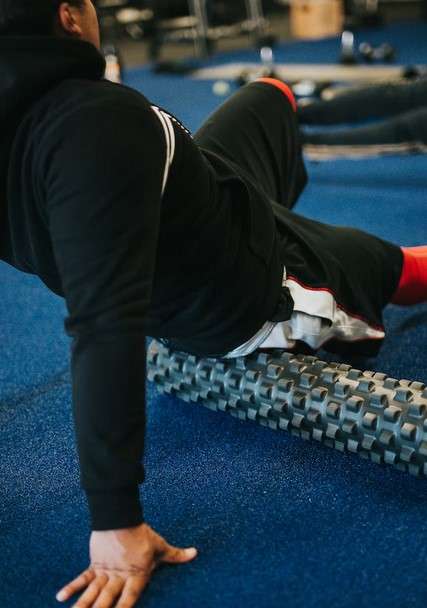
Stretching vs Rolling
There is a lot of confusion when it comes to the difference between rolling and stretching: how to do them, how long, how often, etc.
First the definitions:
Stretching is a form of physical exercise in which a specific muscle or tendon (or muscle group) is deliberately flexed or stretched in order to improve the muscle’s felt elasticity and achieve comfortable muscle tone.
https://en.wikipedia.org/wiki/Stretching
Rolling (using foam roller or ball) is a self-myofascial release (SMR) technique … to inhibit overactive muscles.
https://en.wikipedia.org/wiki/Foam_rolling
Both are great ways to relieve tension in the muscles but very often are used interchangeably without clear instruction of the differences as they are mechanically quite different and therefore must be done in a different manner.
Conventional stretching
Conventional stretching is an elongation of a muscle where the muscle fibers are anchored to a specific non-moving bony structure. As great as stretches are, they can be limited in their efficacy especially depending on how often and long you’re doing the stretch; and the pre-existing tension that’s already in the muscles.
For example for chronic neck tension doing 45 minutes of stretches in the morning, stretching as many muscles as you can in the neck while holding the stretch for 30 seconds is not going to be very effective especially if you have a long day ahead of you.
Conventionally, one is taught to do some stretches either before or after a workout but if you assume that conducting your day as little mini workouts (commuting to work, shopping, a day at the park, sitting at the desk, etc) doing a stretching routine just once in the the morning is just not enough.
It is more effective to do short targeted stretches throughout the day. Frequency trumps duration. For example – during a 8 hour work day at a desk, pick 3-5 different stretches and go through them once holding them for 15-30 seconds once for every hour you’re working. It takes less than 5 mins per round but ultimately be more effective.
For rolling
For rolling on the other hand, its a bit of different story. Mechanically it mimics more of a massage, in which case duration tends to play a more important role over frequency. You wouldn’t want to get a 30 second massage in an area because it won’t really accomplish much and muscle doesn’t have enough time to release.
The best way to roll out a muscle is to pick out an area you want to work on and dedicate a minimum of a minute of continuous rolling in the area. You can repeat and/or roll for longer duration but I always recommend to start less and build up. Once a day is plenty but again you can up the frequency based on necessity and tolerance.
Caveats:
For stretching and rolling there are some downsides. For stretching there is such a thing as too much – over-stretching an already very tight muscle can send the muscle into spasm.
Recommendation – don’t exceed the 30 sec mark and don’t push the stretch to the point of pain, if you feel the stretch then you’re stretching.
For rolling it can be very sensitive especially if the muscle is already very tight and you can be sore from rolling it out.
Recommendation – if the muscle is very sensitive to rolling, few stretches in the targeted area and/or apply some heat.
